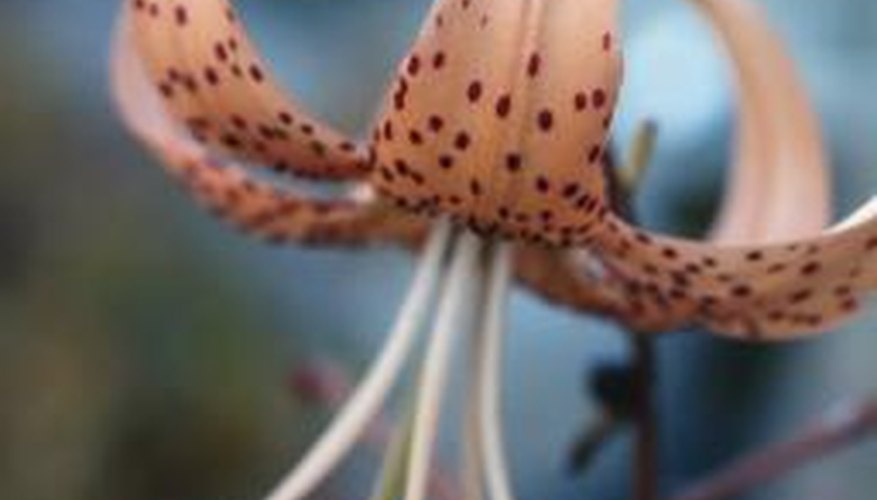The tiger lily, Lilium tigrinum or L. lancifolium, is one of the easiest lilies to grow; it is cold-hardy and disease-resistant. The flowers are usually orange though varieties with yellow and peach are available and are heavily spotted with brown. The petals curve back and up from the down-facing front of the bloom. Though sterile, without seed, it is easily propagated from small bulbils along the stem.
The Bulbil
Some lilies, tiger lilies among them, form small bulbils in the axils of the leaves near the top of the flowering stem. These are miniature bulbs that will sprout roots and leaves when the stem falls to the ground. The roots have the ability to pull the bulb farther into the ground, to the best depth for its protection. The bulbils are very dark, pigmented to protect the DNA of the bulb from ultraviolet light.
- Some lilies, tiger lilies among them, form small bulbils in the axils of the leaves near the top of the flowering stem.
- The roots have the ability to pull the bulb farther into the ground, to the best depth for its protection.
Growth
Once the small bulb begins to grow, it will send up a stem about a foot high with linear leaves growing all along its length. There will be no flowers for the first two years but each year the stem will get taller and thicker. At the same time, the bulb itself is growing larger and the roots are extending themselves into the surrounding soil. Even before flowering, the bulb may send out offshoots, small bulbs that sprout from the base and increase the thickness of the clump.
- Once the small bulb begins to grow, it will send up a stem about a foot high with linear leaves growing all along its length.
Flowering
In the third year, the tiger lily will form buds at the end of each 4- to 6-foot stem. There will be 10 or more flowers, opening from the bottom upward in late summer. These are down-facing, with recurved petals and prominent stamens. Though both stamens and pistils are present, the flowers are not self-fertile and will not set seed. Since this lily has been grown for centuries in Asia as an edible and medicinal plant, it may be a sterile hybrid of two Asiatic species. Bulbils will begin to grow among the leaves before the flowers open.
- In the third year, the tiger lily will form buds at the end of each 4- to 6-foot stem.
Dormancy
Once the plant has flowered and the weather gets colder, the stems of the lily turn brown, wither and die. The bulb, however, remains alive throughout winter and will continue to grow roots underground. In spring, the bulb again sends up a long stem to flower the next summer.
